Popular games for collection Speed Race
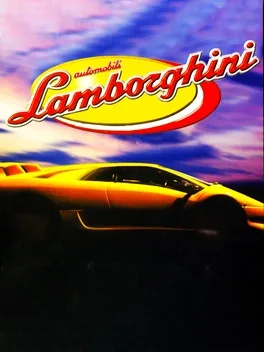
Automobili Lamborghini is one of the earlier racing games for the Nintendo 64, developed by Titus. 8 cars are included in this game, among them the Lamborghini Diablo, Porsche 959, Ferrari F50 and some hidden ones. The courses are quite detailed and the effects are decent, including special effects like lens flares. Races take you through six circuits in exotic areas around the world. There are 4 modes in Single Player including Arcade Mode, Championship Mode, Single Race and Time Trials. The game also includes 4 player support.
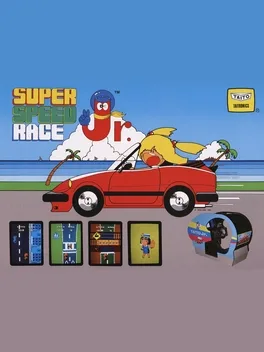
Super Speed Race Jr. is a racing arcade game that was released by Taito Corporation in 1985 only in Japan; it is the seventh and final title in their Speed Race series. The player must use a steering wheel to take up control of a car, with a single pedal to make it accelerate. The car in question is coloured red and you must guide it through the streets of a city while avoiding other CPU-controlled cars (one of which is a yellow Volkswagen Buggy), and trying not to go off the road; you will also have to watch out for zebra and level crossings as pedestrians and diesel-hauled trains pass over them.
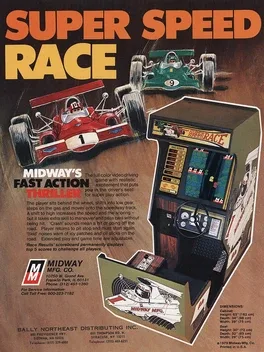
Super Speed Race GP V (released as "Super Speed Race" in North America, and as "Speed Race CL-5" in Europe) is an edition in Speed Race series. The primary gameplay stays identical to earlier games in the series. The player races in a top-down view and must pass other cars to score points. Compared to its predecessor Super Speed Race there are some new elements like the cars' headlights emitting light in tunnels and water slicks on the track. Also new are bridges where the player must choose between two paths and not crash against the divider.
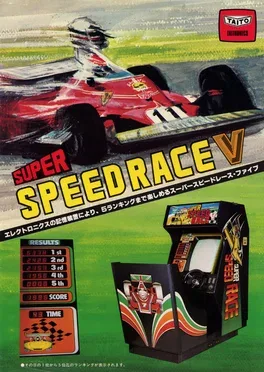
An arcade release in Taito's Speed Race series.
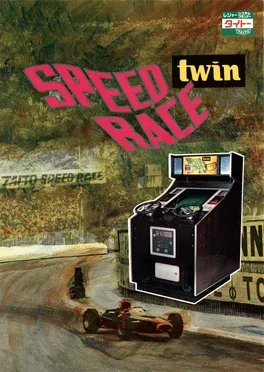
A racing game released by Taito in 1976. It is a simultaneous two-player version of Tomohiro Nishikado's 1974 arcade game Speed Race.
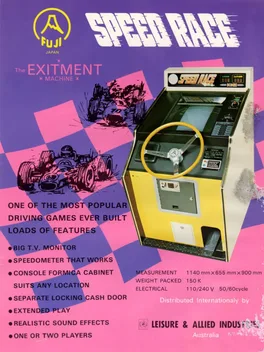
1974 saw the release of Nishikado's Speed Race, an early black-and-white driving racing video game. The game's most important innovation was its introduction of scrolling graphics, where the sprites moved along a vertical scrolling overhead track, with the course width becoming wider or narrower as the player's car moves up the road, while the player races against other rival cars, more of which appear as the score increases. The faster the player's car drives, the more the score increases. In contrast to the volume-control dials used for Pong machines at the time, Speed Race featured a realistic racing wheel controller, which included an accelerator, gear shift, speedometer, and tachometer. It could be played in either single-player or alternating two-player, where each player attempts to beat the other's score. The game also featured an early example of difficulty levels, giving players an option between "Beginner's race" and "Advanced player's race". Speed Race would be the first in a long-running series of arcade games based on the same concept during the 1970's and early 1980's. Speed Race itself was re-released twice in 1978 during the cocktail craze in Japanese arcades - first as a tabletop/cocktail variant and then as a tabletop/cocktail color variant.
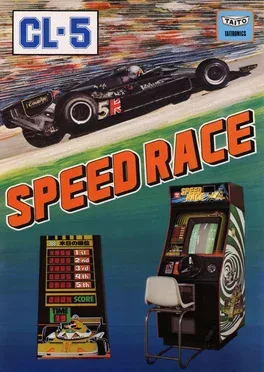
A later release in Taito's Speed Race series.
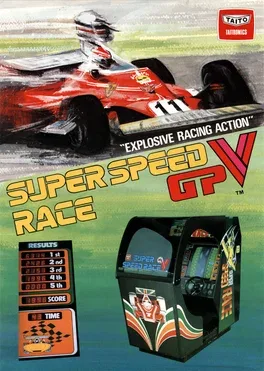
A deluxe cabinet variant of Super Speed Race GP.